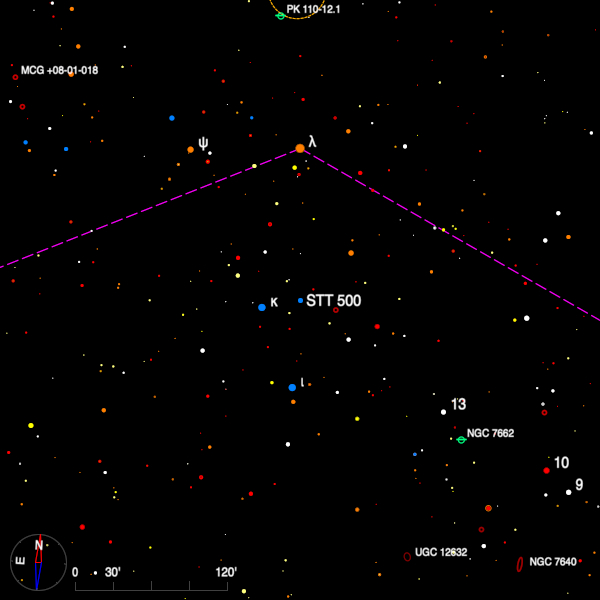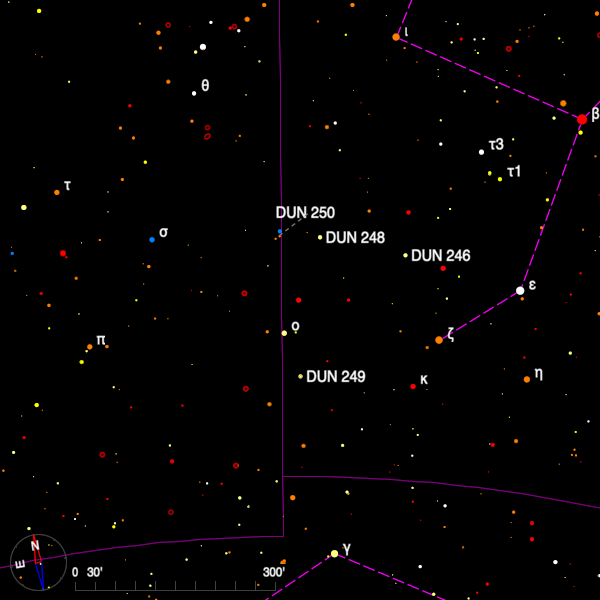October 2022 - Double Star of the Month
Just to the north-east of the Blue Snowball Nebula, NGC 7662, in Andromeda is an asterism of naked-eye stars in the shape of a `Y'. The star at the position where the figure forks is kappa And and just half a degree to the west is STT 500 (23 37 32.53 +44 25 44.5).

This is a long-period binary, a preliminary orbit computed in 1981 gives a period of 351 years, and an aperture of 25-cm is probably needed to divide the stars. The V magnitudes are 6.1 and 7.4 and when the binary nature of the system was discovered in 1843 by Otto Struve at Pulkovo, the stars were 0".3 apart and at a position angle of 273 degrees. They are currently separated by 0".4 and they have moved around to a position angle of 21 degrees.
Gaia DR3 has an entry for the brighter star but no data on parallax and proper motion. The Hipparcos satellite gave a distance of 807 light-years but with a formal error of 104 light-years. At a distance of 118" and a position angle of 334 degrees is a more distant star of V = 11.0.
DUN 249 (23 23 54.52 -53 48 31.5) is located in the extreme SE corner of Grus and about 2.5 degrees due east of kappa Gruis. Like many other pairs in the Dunlop catalogue this is a wide and bright pair, easily seen in the smallest of apertures. I measured it using the 26.5-inch refractor at Johannesburg in 2016 when the position angle and separation were 211 degrees and 26".4 respectively.

Gaia DR3 gives distances of 408 and 494 light-years for the stars which, nevertheless, have very similar proper motions. The errors on the parallaxes nowhere near overlap so it seems that these stars are not connected physically.
Head 3 degrees north and there is a line of DUN pairs stretching along the 51st parallel of south declination including DUN 246, DUN 248 and DUN 250.
Bob Argyle - Double Star Section Director